The Artic Culture Area includes the Aleutian Islands, most of the Alaska Coast, the Canadian Artic, and parts of Greenland. It is an area which can be described as a “cold” desert. Geographer W. Gillies Ross, in his chapter in North American Exploration. Volume 3: A Continent Comprehended, writes:
“The North American Arctic is usually considered to be the region beyond the northernmost limit of tree growth.”
The area has long, cold winters and short summers. During the summer, the tundra becomes boggy and difficult to cross. W. Gillies Ross describes the region this way:
“In general, the Arctic is characterized by mean monthly temperatures under 50ᵒ F (10ᵒ C); long, severe winters; short, cool summers; persistent ice cover on fresh- and saltwater bodies; prolonged winter darkness and summer daylight; ground underlain by continuous permafrost; and a comparatively small number of plant and animal species.”
The native people of the Artic are usually divided into the Aleut and the Eskimo. The Eskimo refer to themselves as Inuit and the Aleut call them themselves Unangan. All of the languages of this area are classified as Eskimoan.
In an article in American Indian Art, museum curator Eva Fognell reports:
“The Arctic cultures have strong aesthetic traditions. For example, carving and incising ivory is an ancient practice among groups throughout the region.”
The Portland (Oregon) Art Museum has a small collection of Inuit Art. Some of this art is shown below.
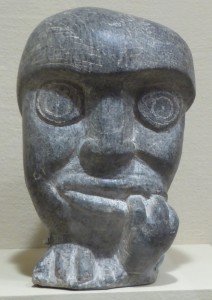
Shown above is a steatite carving entitled Katutajuk Legend, made in 1968 by Davidialuk Alasua Amittu.
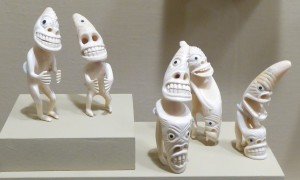
Shown is a series of ivory carvings entitled Tupilak, made about 1960 by an unknown Inuit artist.

Shown above is a serpentine carving made by John Tiktak (1916-1981) about 1969.
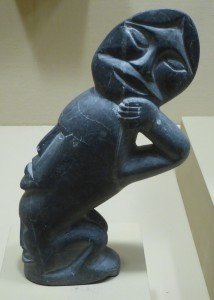
Shown above is a serpentine carving entitled Spirits made by Sila Aittauq about 1986.
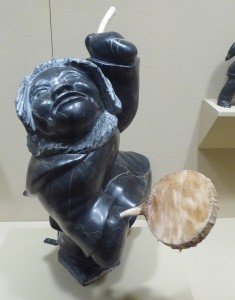
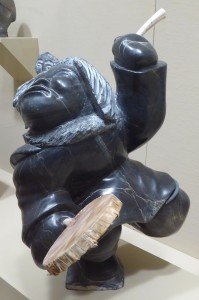
Shown above is a serpentine and antler figure entitled Drum Dancer made by Aquangajúk Shaa in 2000.
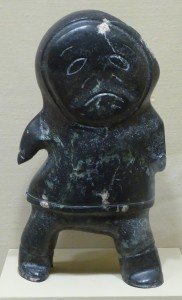
Shown above is a serpentine figure entitled Standing Inuk made by an unknown artist about 1963.
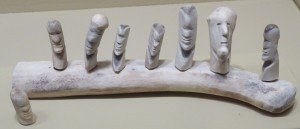
Shown above is a work entitled Antler Heads made by Martha Anowtalik in 1978.

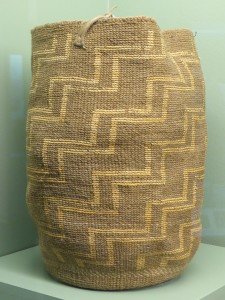
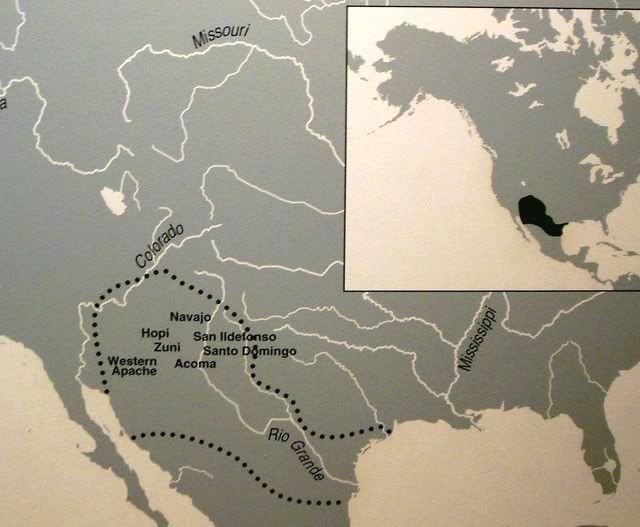
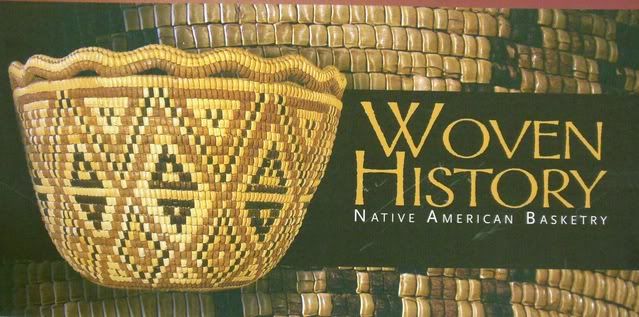
Leave a Reply